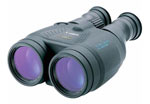Smart-Review | Binoculars Buying Guide 2025 | Comparison
January 10, 2025 by SmartReview
Filed under Best Rated Binoculars, Binoculars Articles
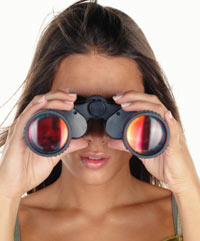
Binoculars Buying Guide 2025
Buying Binoculars can be confusing as there are many choices and types of binoculars. This guide will attempt to explain the main factors that you should look for in buying binoculars and how to buy and which type would be best suited for your needs.
Cheap and Expensive Binoculars When buying binoculars, the term “you get what you pay for” certainly applies, as it does to camera lenses. Cheap binoculars will not perform nearly as well as the more expensive optics in high end binoculars. That is why some binoculars can cost as high as $2,000 (similar to high end SLR lenses). As with camera lenses, cheaper binoculars will have what is called chromatic abberations, which is a distortion of the image you see.
What does 7×50 mean? – Binoculars are quoted with two numbers, the first in the 7×50 example is 7. This tells you the magnification of the binoculars. These binoculars will bring objects 7 times closer than normal vision. The second number (50) will tell you the size of the objective lens in mm. The larger the objective lens, the brighter the image you will see (better light gathering). Binoculars come in many sizes like 10×50, 8×42, etc.
What size Objective Lens to get? – As explained above the second number in the example 7×50 is the size of the objective lens in mm. The objective lenses are at the rear of the binocular. The larger the objective lens size, the more light sensitive the binoculars which can help in low light conditions, or where you have a very high magnification. (Higher magnification reduces the available light). One downside of a large objective lens is that the binoculars will be larger, bulkier and weight more. The largest objective lens binoculars are used for astronomy since they will need the most light gathering.
What magnification/power should I get? – This depends on what you are viewing. Popular sizes are 7x, 8x and 10x for general use. Keep in mind that the higher the magnification, the less light will reach your eyes. The higher you go, it will bring you closer to the action, but your field of vision will narrow as well. What this means is that you will be looking at a smaller part of your view, but closer in. The higher the magnification, the harder it will be to keep the image steady, and you must hold the binoculars very steady or images will blur. The latest Image Stabilized Binoculars will alleviate this problem as they compensate for any shaking you may do (Or shaking by where you are standing, such as a boat, car, or airplane).
Related Article: Best Rated 8 Power (8x) Binoculars – Comparison & Reviews
Related Article: Best Rated 10 Power (10x) Binoculars – Comparison & Reviews
Image Stabilized Binoculars – Utilizing the same principle used for camera lenses, an image stabilized pair of binoculars can keep the image rock steady even if using a high power magnification. It works by counteracting any vibration or movement that occurs. That is why its hard to get a clear image from high magnification binoculars. If you don’t have image stabilized binoculars you may have to use a tripod to get a similar image. On a boat, even a tripod may not help since the boat is moving, and not just you. The same would be true from a car, bus, truck, etc.
Related Article: Best Rated Image Stabilized Binoculars – Comparison & Reviews
Waterproof Binoculars – These binoculars are sealed so that you can take them out in bad weather, or when near water, or boating. Many use a rubber O-ring and nitrogen gas seals. Most waterproof binoculars are also Fog proof, to help prevent condensation from forming on the lenses. Our most popular and top-rated waterproof binoculars are the Nikon Monarch Waterproof Series, compared in the article below.
Related Article: Best Rated Waterproof Binoculars – Comparison & Reviews
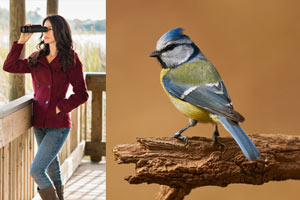
Birding Binoculars
Related Article: Best Rated 8 Power (8x) Binoculars – Comparison & Reviews
Related Article: Best Rated 10 Power (10x) Binoculars – Comparison & Reviews
Zoom Binoculars – Zoom binoculars allow you to change the magnification factor from low to high. For example, 8-24×50 signifies that these binoculars can go from 8 to 24 times magnification, with an objective lens of 50mm. One big disadvantage of zoom binoculars is that the field of view will be much smaller at the low end, than similar binoculars without zoom. Image quality will not be as high as a regular fixed pair of binoculars. We have not found high end zoom binoculars, only lower priced models.
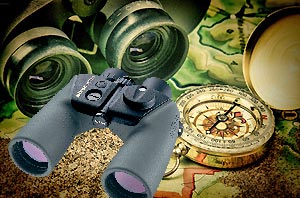
Compass & Rangefinder Binoculars
Related Article: Best Rated Compass & Rangefinder Binoculars – Comparison & Reviews
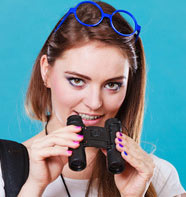
Compact Binoculars
Related Article: Best Rated Compact & Lightweight Binoculars – Comparison & Reviews
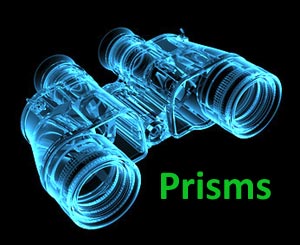
Binocular Prisms
What does Apparent Field of View mean? – This is the area that is visible through your binoculars. With normal vision you can see about 180 degrees (out of 360 degrees). When using binoculars you have a narrower field of view. This view decreases as you increase the power of magnification. However higher magnification will bring you in closer to your subject, so it is a tradeoff which you must decide. Larger field of view or higher magnification. Some binoculars are “wide angle” which allows a higher power binocular to have a wide field.
Lens Coatings – Most binoculars have special coatings. These help remove glare (such as from the sun hitting water), and help to allow the maximum amount of light reach through the binocular’s lenses. The more expensive binoculars have multiple coatings on their lenses.
Boating & Marine Binoculars – For boating or marine use, we recommend only waterproof & fogproof binoculars with a rubber coating for easier grip when wet. A lower magnification would be recommended, 7x or under, otherwise the image would be blurred. Many of the best marine binoculars are 7×50 models which have large objective lenses for low light performance. For this type of application, image stabilized binoculars would be ideal. With these, you can go higher than 7x, and still maintain a clear, sharp, image.
Related Article: Best Rated Marine & Boating Binoculars – Comparison & Reviews
Related Article: Best Rated Image Stabilized Binoculars – Comparison & Reviews

Hunting Binoculars
Hunting binoculars should be waterproof since they can and will be used in inclement weather. Many hunters also use a spotting scope with higher power as well as binoculars.
Related Article: Best Rated Image Stabilized Binoculars – Comparison & Reviews
Related Article: Best Rated Waterproof Binoculars – Comparison & Reviews

